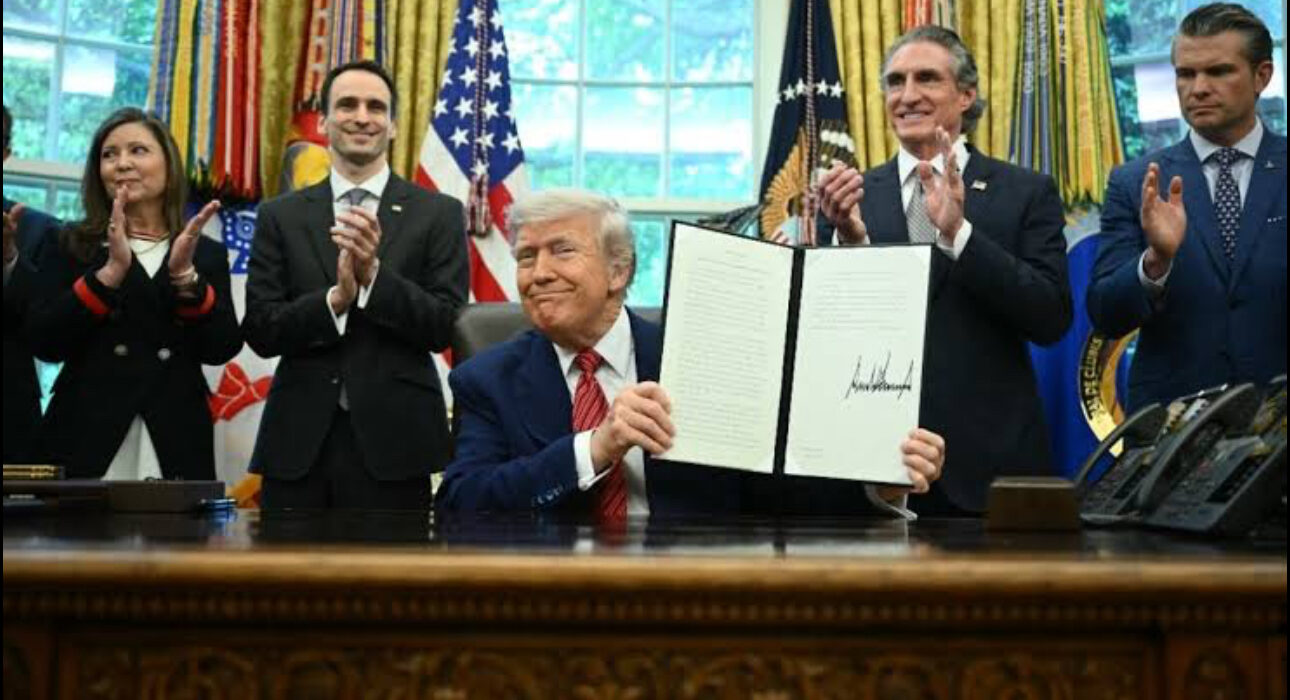Trump Pursues Aggressive Nuclear Program, Signs Executive Orders to Boost U.S. Nuclear Sector

President Donald Trump on Thursday signed four executive orders aimed at quadrupling the nation’s nuclear capacity by 2050, expediting regulatory processes, and reducing dependency on foreign uranium.
The orders mark one of the most aggressive pushes for nuclear energy in U.S. history, reflecting growing demand for reliable, carbon-free power — especially to support energy-intensive technologies such as artificial intelligence and data centers.
Major Goals and Provisions
1. Expanding Nuclear Power Capacity
President Trump announced an ambitious target to increase U.S. nuclear energy capacity fourfold by mid-century. As a first step, the administration plans to build at least ten new large-scale nuclear reactors by 2030.
Enhancements to existing nuclear facilities are also part of the plan, with a focus on advanced reactor technologies and modular designs.
2. Streamlining Approvals and Oversight
One of the most controversial elements of the initiative involves overhauling the regulatory process. The Nuclear Regulatory Commission (NRC) is now mandated to approve new reactor projects within 18 months — a significant reduction from current timelines. Additionally, the Department of Energy (DOE) will assume expanded authority over the approval of advanced reactor designs, a responsibility traditionally held solely by the NRC.
3. Boosting Domestic Uranium Production
Citing national security concerns, Trump invoked the Defense Production Act to jump-start domestic uranium mining and enrichment. The move is intended to reduce U.S. reliance on foreign uranium imports, particularly from geopolitical rivals such as Russia.
4. Building on Federal Lands
To accelerate deployment, the executive orders authorize the DOE and Department of Defense to construct nuclear reactors on federally owned land. These facilities will be used to power military bases, AI data centers, and other critical infrastructure.
Industry leaders welcomed the announcement, viewing it as a much-needed boost to an industry that has struggled with high costs, regulatory delays, and public skepticism.
Shares of nuclear-related companies, including advanced reactor startup Oklo and utility giant Constellation Energy, surged in response to the news.
“The president’s orders represent a bold step toward reestablishing U.S. leadership in nuclear technology,” said an Oklo spokesperson, adding, “This is exactly the kind of clarity and support the sector has been waiting for.”
Not everyone is applauding the initiative. Environmental groups and some nuclear safety advocates expressed deep concern over the reduced role of the NRC and the accelerated timelines for project approvals.
“Streamlining regulations cannot come at the cost of public safety,” said a representative from the Union of Concerned Scientists who said, “These changes risk undermining the NRC’s independence and could erode public trust.”
Skeptics also raised doubts about the feasibility of building 10 reactors within five years, pointing to a history of cost overruns and delays in past projects.
The executive orders highlight the Trump administration’s broader strategy to secure America’s energy future by leaning heavily on nuclear power as a clean, stable, and domestically controlled energy source. The move also aims to position the U.S. competitively in the global nuclear market, especially as countries like China and Russia continue to invest heavily in nuclear development.
With growing electricity demand and a renewed emphasis on energy independence, the administration argues that nuclear power must be a central part of the nation’s long-term strategy.








